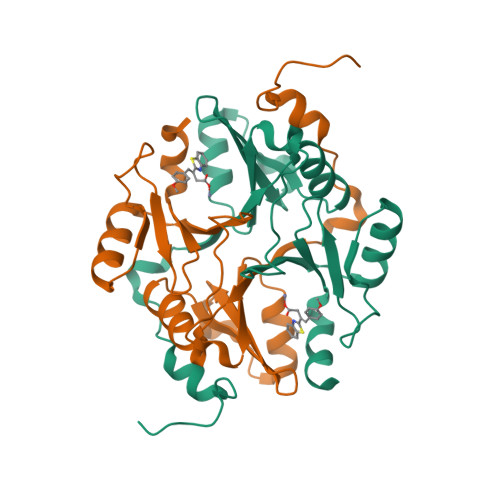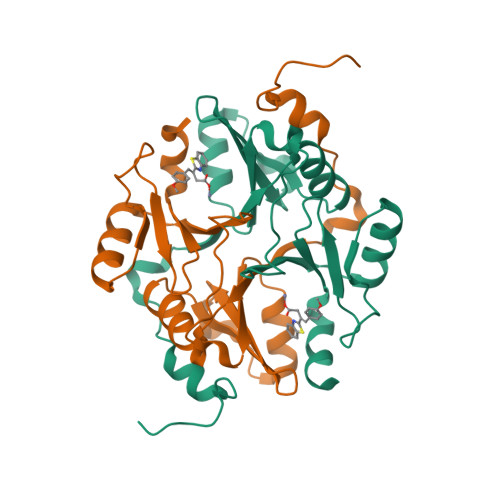Crystal structures of human glyoxalase I and its complex with TLSC702 reveal inhibitor binding mode and substrate preference.
Usami, M., Ando, K., Shibuya, A., Takasawa, R., Yokoyama, H.(2022) FEBS Lett 596: 1458-1467
- PubMed: 35363883
- DOI: https://doi.org/10.1002/1873-3468.14344
- Primary Citation of Related Structures:
7WSZ, 7WT0, 7WT1, 7WT2 - PubMed Abstract:
Human glyoxalase I (hGLO I) is an enzyme for detoxification of methylglyoxal (MG) and has been considered an attractive target for the development of new anticancer drugs. In our previous report, the GLO I inhibitor TLSC702 induced apoptosis in tumor cells. Here, we determined the crystal structures of hGLO I and its complex with TLSC702. In the complex, the carboxyl O atom of TLSC702 is coordinated to Zn 2+ , and TLSC702 mainly shows van der Waals interaction with hydrophobic residues. In the inhibitor-unbound structure, glycerol, which has similar functional groups to MG, was bound to Zn 2+ , indicating that GLO I can easily bind to MG. This study provides a structural basis to develop better anticancer drugs.
Organizational Affiliation:
Faculty of Pharmaceutical Sciences, Tokyo University of Science, Noda, Japan.




















